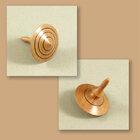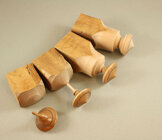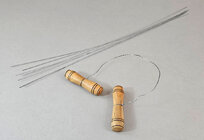I'm finding some woods are harder to burn rings in using linoleum samples than others. Have you found that too?
When I wet sand the inside of a bowl, then reverse it to complete the bottom using a vacuum chuck I'm left with ring marks from the chuck and end up resanding the inside to remove the rings. How to you avoid somethng like this from happening?
Thanks.
When I wet sand the inside of a bowl, then reverse it to complete the bottom using a vacuum chuck I'm left with ring marks from the chuck and end up resanding the inside to remove the rings. How to you avoid somethng like this from happening?
Thanks.



